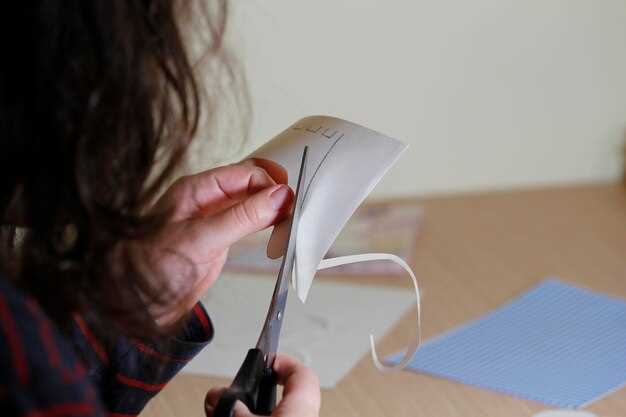
Achieving optimal accuracy with your bow requires more than just practicing your aim; it involves meticulous tuning of your equipment. One effective method to ensure your bow is performing at its best is through paper tuning. This technique provides valuable insights into the way your arrows are flying and how well your bow is set up. By using a simple sheet of paper, you can diagnose tuning issues that may be affecting your shooting performance.
In this article, we will guide you through the process of paper tuning your bow at home, emphasizing the critical steps that lead to improved accuracy. Understanding the relationship between arrow flight and bow settings will empower you to make informed adjustments. With just a few tools and a bit of patience, you can transform your bow setup and elevate your shooting precision.
Paper tuning allows you to see the correlation between your arrow’s flight path and its interaction with the bow. By analyzing the tear patterns that occur when an arrow passes through the paper, you can identify whether your bow is tuned properly or requires modification. Let’s delve into the details of this process and discover how it can significantly enhance your shooting accuracy.
Preparing Your Setup for Accurate Paper Tuning
Before beginning the paper tuning process, it’s essential to prepare your setup meticulously. Proper preparation helps ensure that the tuning adjustments you make are effective and lead to improved accuracy. Here are the key steps to consider:
- Choose the Right Location: Select an indoor space or a sheltered outdoor area with minimal wind and distractions. A controlled environment helps to achieve more consistent results.
- Gather Necessary Equipment: Ensure you have the following items ready before starting your paper tuning:
- A paper tuning frame
- High-quality shooting paper (preferably white)
- Your bow and arrows
- A target stand or a solid backing to hold the paper
- A ruler or measuring tape for precise adjustments
- Set Up the Paper: Attach the paper to the frame at a height where you can shoot comfortably. The paper should be perpendicular to your shooting line and securely fastened to avoid movement during the shooting process.
- Check Your Bow Setup: Inspect your bow for any mechanical issues. Ensure that:
- The rest and nocking points are correctly installed.
- The string is properly waxed and in good condition.
- Arrows are matched to your bow’s specifications, including spine and weight.
- Adjust Your Stance and Anchor Point: Consistency in your shooting technique is crucial. Practice your stance and anchor point to ensure they remain the same for every shot. This reduces variability in the results.
By diligently preparing your setup and ensuring that all elements are in optimal condition, you pave the way for effective paper tuning. This preparation will facilitate more accurate adjustments and help you understand how your bow performs with different tuning settings.
Interpreting Paper Tuning Results for Bow Adjustments

Interpreting paper tuning results is essential for making precise adjustments to your bow. When you shoot an arrow through a sheet of paper, the tear pattern you observe reveals critical information about your setup. Understanding these patterns allows you to identify inconsistencies and make necessary corrections.
There are several common types of tears you may encounter: square (perfect), horizontal, vertical, and torn. Each of these results indicates different issues with your bow tuning.
A square tear signifies that your bow is tuned correctly. The arrow is leaving the bow cleanly, indicating optimal arrow flight. No adjustments are needed if you achieve this result consistently.
A horizontal tear, where the tear is wider than it is tall, often indicates that your nocking point is too high or that your arrow rest is misaligned. To correct this, consider lowering the nocking point or adjusting the rest height.
A vertical tear, characterized by a narrow and tall tear, suggests that the nocking point is too low or that there may be issues with spine alignment. Raising the nocking point or changing arrow spine may resolve this issue.
If you observe a torn tear, it may indicate a problem with either the arrow’s spine or your form. This type of tear is often a sign of an erratic release, so focusing on consistent shooting form is crucial.
After interpreting the patterns, make small adjustments to your bow setup. Tuning is an iterative process; repeat the paper tuning test after each adjustment to assess whether the changes have positively impacted arrow flight. Consistency in your results will help you achieve better accuracy.
Fine-Tuning Arrow Flight for Optimal Accuracy

To achieve optimal accuracy in archery, fine-tuning arrow flight is essential. A well-tuned arrow will provide a straight trajectory, allowing the archer to hit targets consistently. The tuning process involves adjusting various components of the bow and arrow setup, with a significant focus on the arrow’s interaction with the bowstring during release.
One of the most effective methods for fine-tuning arrow flight at home is through paper tuning. By shooting arrows through a piece of paper at a measured distance, archers can observe the tear pattern that the arrow creates upon impact. This pattern provides critical insights into the arrow’s flight behavior, indicating whether it is flying straight or veering off course.
During paper tuning, a clean vertical tear suggests that the arrow is properly aligned with the bowstring, indicating good nock and spine selection. Conversely, a horizontal tear can signal issues with the bow’s tiller or arrow spine, prompting adjustments. For example, if the tear tilts to the left, the arrow may be underspined or the bow may require a slight adjustment in nock position.
Arrow rest position also plays a significant role in fine-tuning. The center shot needs to be accurate, as an improper alignment can disrupt arrow flight. Adjusting the arrow rest to achieve perfect alignment with the bowstring can lead to substantial improvements in accuracy. Testing various arrow configurations, including different weights and fletching styles, can further refine the tuning process.
Lastly, consistent practice and observing the results from paper tuning will allow archers to develop a deeper understanding of their equipment. Regular tuning sessions can ensure that arrows perform at their best, significantly improving overall shooting accuracy and confidence in the field.



